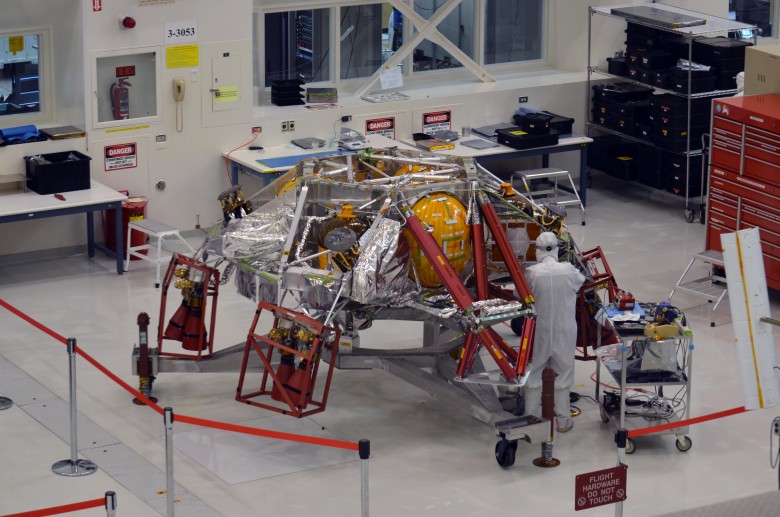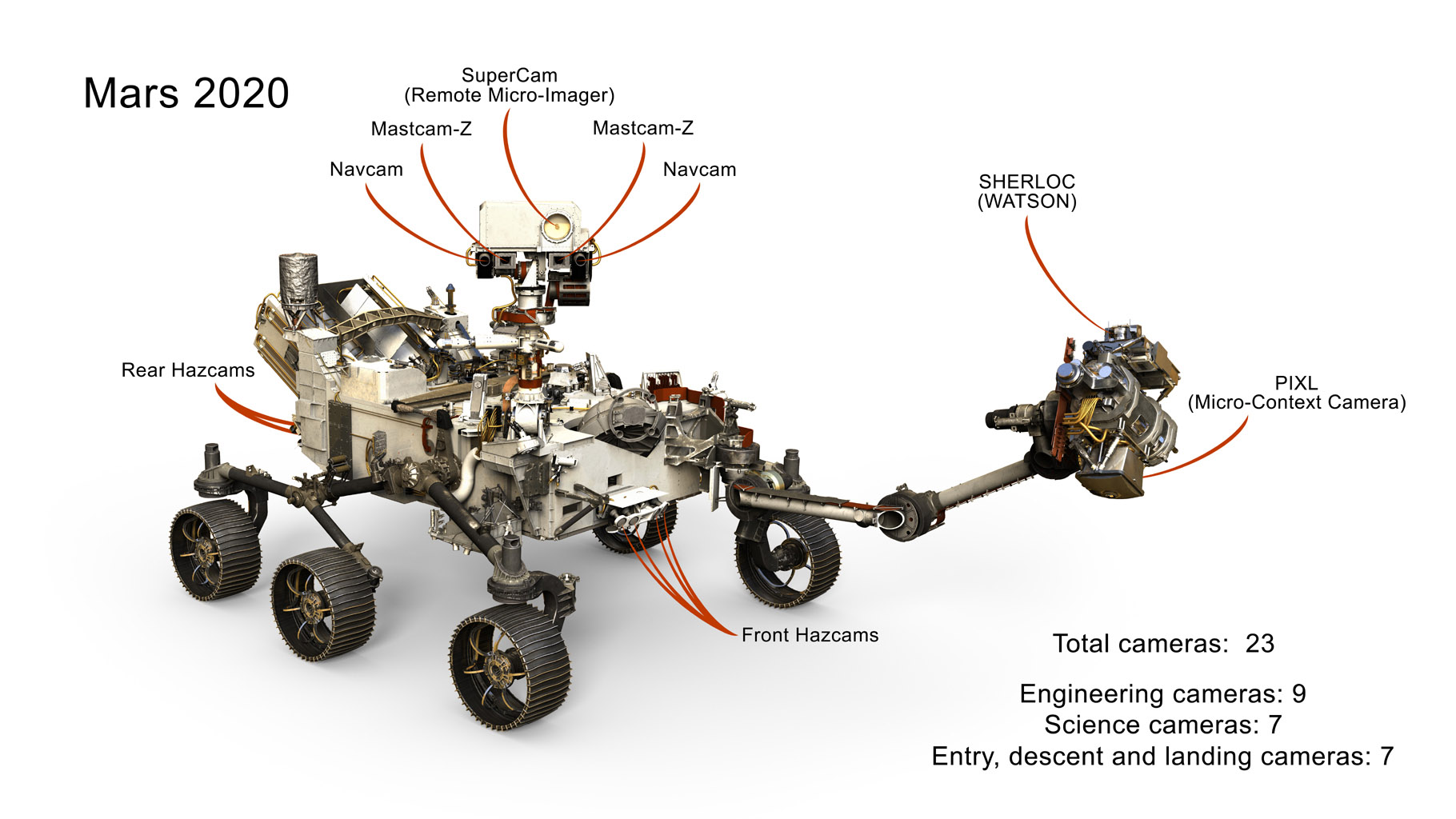The assembly of the descent stage “Mars-2020” has begun.

A group of technicians is working on the descent stage of the Mars-2020 vehicle in the assembly shop of the JPL space assembly. The device should deliver the next NASA Mars rover to the Red Planet in 2020
NASA engineers embarked on the ATLO phase (assembly, testing and launch operations) as part of the Mars 2020 mission. At the moment, the electrical equipment of the flight equipment is being connected to the descent stage of the vehicle (in the photo), which should land the rover on the Martian surface. At the end of this stage, all parts will be assembled together - the descent stage, the main stage, the protective cover for the soft-fit engines and the rover itself. These procedures will be performed in the High Bay 1 ship building, which is located at NASA's Jet Propulsion Laboratory in Pasadena, California.
Over the next one and a half years, engineers and technicians will gradually attach equipment to the spacecraft, adding subsystems one by one: on-board equipment, power, telecommunications equipment, machinery, heating systems and navigation systems. The engines have already been installed earlier this year on the main structures of the sustainer and descent stages.
Some components come to the assembly shop from neighboring buildings in Pasadena, and some come from other parts of the world, including some scientific instruments. For example, GPR is made in Norway, and a set of sensors for measuring temperature, wind speed and direction, pressure, relative humidity, dust size and shape - in Spain.
')

Scientific tools on the Mars-2020 rover
The mission is scheduled to launch in July 2020 on board the Atlas V rocket. The rover will conduct a geological assessment of the landing site on Mars, determine the suitability of the environment for human habitation, search for traces of ancient Martian life, assess natural resources and hazards for future researchers. In addition, with the help of scientific instruments installed on board, scientists plan to identify suitable rock and soil samples. The rover will collect them, sealed in sealed containers and left on the surface of Mars. In future missions, these containers will be found, and then delivered to Earth for more thorough analysis. Then for the first time we will be able to see with our own eyes (and someone will be able to hold in hands) a real Martian regolith and stones.

A piece of the Sayh al Uhaymir 008 meteorite (SaU008), which according to scientists flew from Mars, is used by NASA to test the scientific instruments of the Mars-2020 rover
The following scientific tools will be installed on the rover:
- Planetary Instrument for X-ray Lithochemistry (PIXL) is an X-ray fluorimetric spectrometer, which will also contain a high-resolution thermal imager to determine the composition of Martian soil by elements.
- Radar Imager for Mars' Subsurface Exploration (RIMFAX) - GPR, which probes the geological structure of the soil at a depth of 10 meters. The tool will be able to determine the density of the soil, to study the structural layers, subterranean stones, mateorites, accumulations of water ice and salt brines.
- Mars Environmental Dynamics Analyzer (MEDA) is a set of sensors that measure temperature, wind speed and direction, pressure, relative humidity, size and shape of dust.
- Mars Oxygen ISRU Experiment (MOXIE) is an experimental instrument that will produce oxygen from atmospheric carbon dioxide. As part of the experiment, they will test a technology that may come in handy in the future for maintaining human activity and making rocket fuel for reverse missions.
- SuperCam is a tool for analyzing the chemical and mineralogical composition of Martian soil. The device is similar to ChemCam, working on "Curiosity", but additionally equipped with tools for the detection of organic compounds.
- Mastcam-Z is an advanced system of two cameras with panoramic and stereoscopic imaging and a variable focal length lens.
- Scanning Habitable Environments for Organics and Chemicals (SHERLOC) is an ultraviolet Raman spectrometer for detailed mineralogy and organic matter detection.
- Microphones that are activated during landing, the movement of the rover and the collection of samples.
- 23 cameras

The location of the cameras on the Mars-2020 rover
In addition, it is possible that the Mars Helicopter Scout (MHS) solar-powered kilogram drone helicopter may be included in the mission, but it is still in question. According to the latest information , the drone is being tested in the Arctic.
Source: https://habr.com/ru/post/410827/
All Articles